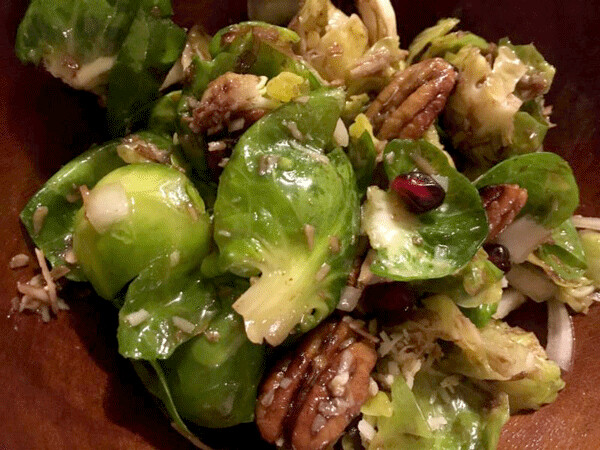Locavore-ish


Ten years ago, “locavore” was anointed 2007 word of the year by the Oxford American English Dictionary. Since then the idea of wanting to eat closer to home has only gained traction, which has naturaly invited skepticism. Number crunchers have found enough cases of it being more carbon-friendly to purchase food from far away places than closer to home, that the locavore case would be sunk, at least if saving the world is the goal.
Pierre Desrochers, co-author of Locavore’s Dilemma: In praise of the 10,000-mile Diet, argues that it’s more energy efficient to ship a tomato thousands of miles in winter then to grow one in a heated greenhouse close to home. His calculations miss an important x-factor: few locavores have much interest in a fresh tomato in the middle of winter. They tend to taste like red snowballs. I prefer to put away tomatoes in summer ,when they are delicious, cheap and plentiful. Marinated or dried are the best tomatoes for winter salads. (Ketchup, meanwhile, is a perfect tomato product for dressing the all-American burger and fries.)
Once upon a time, a winter salad didn’t even contain leaves, much less tomatoes, and was made of shredded roots that had been squirreled away during warmer times. Such a meal was originally made possible by the advent of root cellars and other winter storage facilities that kept certain crops cool but not frozen. It wasn’t much, but it was fiber. And given the human habit of eating extra-heavily in winter, fiber was a dietary commodity.
Today, at a grocery store or even winter market, it’s possible to easily acquire a rainbow of tubers. I just returned home from the winter market with carrots, purple and white daikon radish and sweet salad turnips and onions. I passed on a bunch of others that I wasn’t feeling, like Jerusalem artichokes, because I fart enough as it is, and red beets, which would dye the winter salad in beet red.
Nowadays a winter salad can mean more than roots and cabbage. Actual leaves are being grown in unheated greenhouses, as greenhouse innovations have ushered in a winter salad revolution on par with that brought on by the advent of root cellars. My winter market was flush with leaves as well, and cold weather leaves are a special sort, with lower water content then their summer counterparts, to avoid freezing. Stunted by cold like alpine shrubs, they are dense in body and larger than life in flavor. Sure, you can buy kale or lettuce from afar and not feel guilty, but nor would you feel pleasure.
Regardless of the means by which you acquire your winter greens, I’m going to present you with two salads that will make you miss summer about as much as you miss the dentist. At least, while you’re eating. And if you find yourself tucked in some desert oasis or tropical paradise, perhaps these recipes will give you that warm, fuzzy wood stove-y feeling that you relinquish in the land of endless summer.
The first step in many great winter salad recipes is to prepare an onion, by cutting and marinating it, which turns a spicy onion sweet and makes a delicious dressing that doubles as an onion salad.
Slice the ends off a yellow onion, and then slice it end to end. Pull the peel off, lay the flat (cut) sides of the onions on the cutting board, and slice thinly, along the end-to-end axis, from one side of the onion to the other. Leave the slices like this, or gather the onion halve back together and slice again crosswise, which will result in confetti-sized pieces. Marinate one onion in enough lime juice and/or white balsamic and olive oil to cover it, with grated garlic and salt to taste.
When I have this onion dressing, I have options. Winter salad options.
If I’m feeling like an old-school shredded salad, I’ll trim and wash some shreddable vegetables, peeling any that I feel could use it, and then thickly grating the stuff, roots mostly, but maybe cabbage, into a bowl. If you are unsure about the flavor of the roots, or the proportions in which they should be used, start by shredding a representative sample of each item you plan on grating, and do a test batch.
If you want more hand-holding, start with a combination of coarsely grated carrot and finely grated garlic, a combination that, as I learned in Siberia, definitely works. I’ll never forget my first carrot salad, with salt, fried trout and mayo. No tomatoes, no leaves, no olive oil, but it was a meal fit for Caesar.
Starting there, one can grate in yellow or white beet, a mild radish like daikon, and salad turnips if you can find them. Mix the shreds and see how they taste together, then dress it.
One option is to add a few tablespoon of toasted sesame oil and a teaspoon of soy sauce to dress up these shreds. Toasted sesame seeds go well here too, as a replacement for sesame oil. Then mix with the onions. Alternatively, skip the soy and sesame, and just mix the shreds with onion dressing.
And if cabbage is what you’re grating, a dressing of garlic, lime, mayo, shredded Parmesan and a shot of Worcestershire sauce will give it a creamy, vaguely Caesarian flare.
Fresh Brussels Sprouts Salad
The consummate gastronome Allen Broach of Greensboro, South Carolina, happens, as we speak, to be on a binge of brussels sprout salads, one of which he sent along from the trenches:
1 pound brussels sprouts leaves torn form the sprouts
1/2 cup toasted walnuts
3 tablespoons finely grated pecorino Romano cheese
3 tablespoons extra-virgin olive oil or to taste
1/2 t kosher salt
1 T freshly ground black pepper or to taste
Balsamic reduction to sprinkle over the salad just before serving
Notes: Pulling apart the brussels sprouts leaves can be laborious, but results in a charming salad of green scallop shells. The inner core of the sprouts, which haven’t yet differentiated into leaves, can be thin-sliced. I swapped pecans for the walnuts, and they were great. Grate the cheese coarsely. For the balsamic reduction, heat a half-cup of balsamic on low, allowing it to slowly thicken to about half the volume. I dressed mine up with pomegranate arils, and the onion dressing, of course. It was special. And local. Enough.
